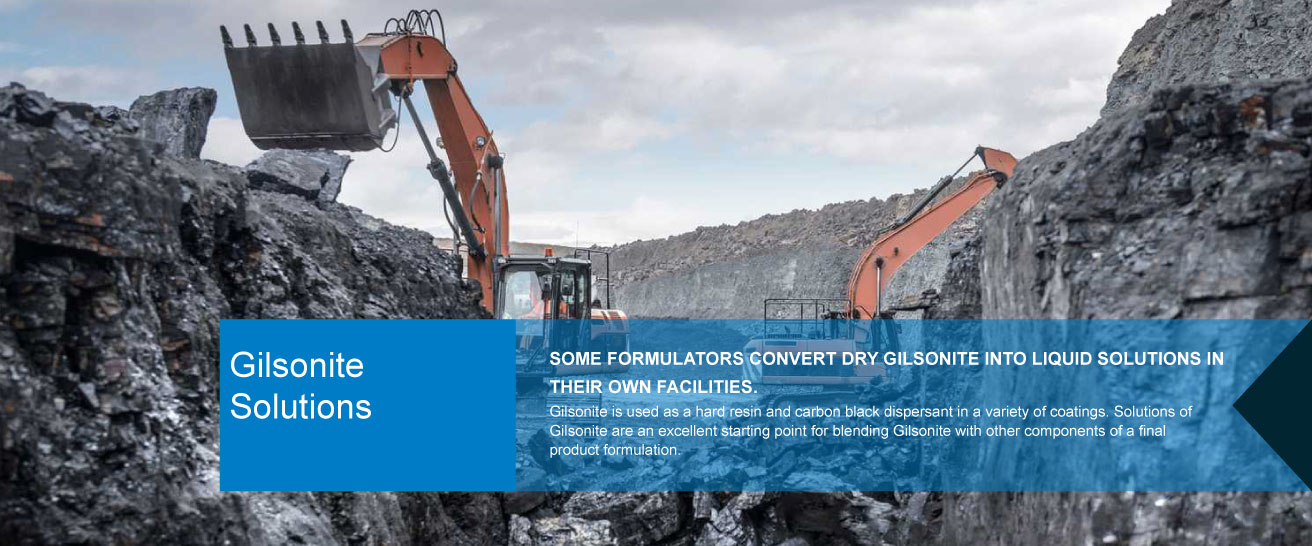
GILSONITE SOLUTIONS
Solutions of gilsonite (sometimes called cutbacks or varnishes) are an excellent starting point for blending gilsonite with other components of a final product formulation. Some formulators convert dry gilsonite into liquid solution in their own facilities. Others will request a pre-made solution. Converting dry, granular gilsonite to a liquid solution also provides the opportunity to remove the small amount of abrasive grit that occurs in natural asphaltums. Stabilizing additives can also be added if a poor solvent is used or if high concentrations of Gilsonite are desired.
-
Solubility
Gilsonite is soluble in aliphatic, aromatic and chlorinated hydrocarbon solvents. It has limited solubility in most ketones, but is soluble in mixed aromatic solvents that contain a ketone component. Gilsonite is not soluble in water, alcohols, or acetone.
-
Solution Preparation
Three basic procedures are used to dissolve gilsonite. In each case, precautions for flammable materials should be used.
-
Cold-cutting:
Gilsonite is generally soluble in aliphatic and aromatic solvents at ambient temperatures. Some agitation should be used. The rate of solution will depend on the type of solvent, the type and severity of mixing, and the grade of gilsonite. The solution rate can be increased by using a high shear mixer, such as a Cowles disperser. When a ball mill or a paddle mixer is used, lump grade gilsonite is recommended. When high energy mixing is available, either lump or pulverized grades may be used. Care must be taken to avoid “dry balls” of un-dissolved solid when using pulverized grades.
-
Hot-cutting:
The rate of solution can be increased by heating. Steam coils or hot oil is preferred. Direct-fired heating can be hazardous. Care must be taken to avoid or make up for vaporized solvent. Facilities for solvent containment are often necessary. The
maximum processing temperature will depend on the boiling range of the solvent.
-
Hot fluxing:
Gilsonite can be hot fluxed into asphalts and high boiling oils. See a separate technical bulletin for details on this procedure.
